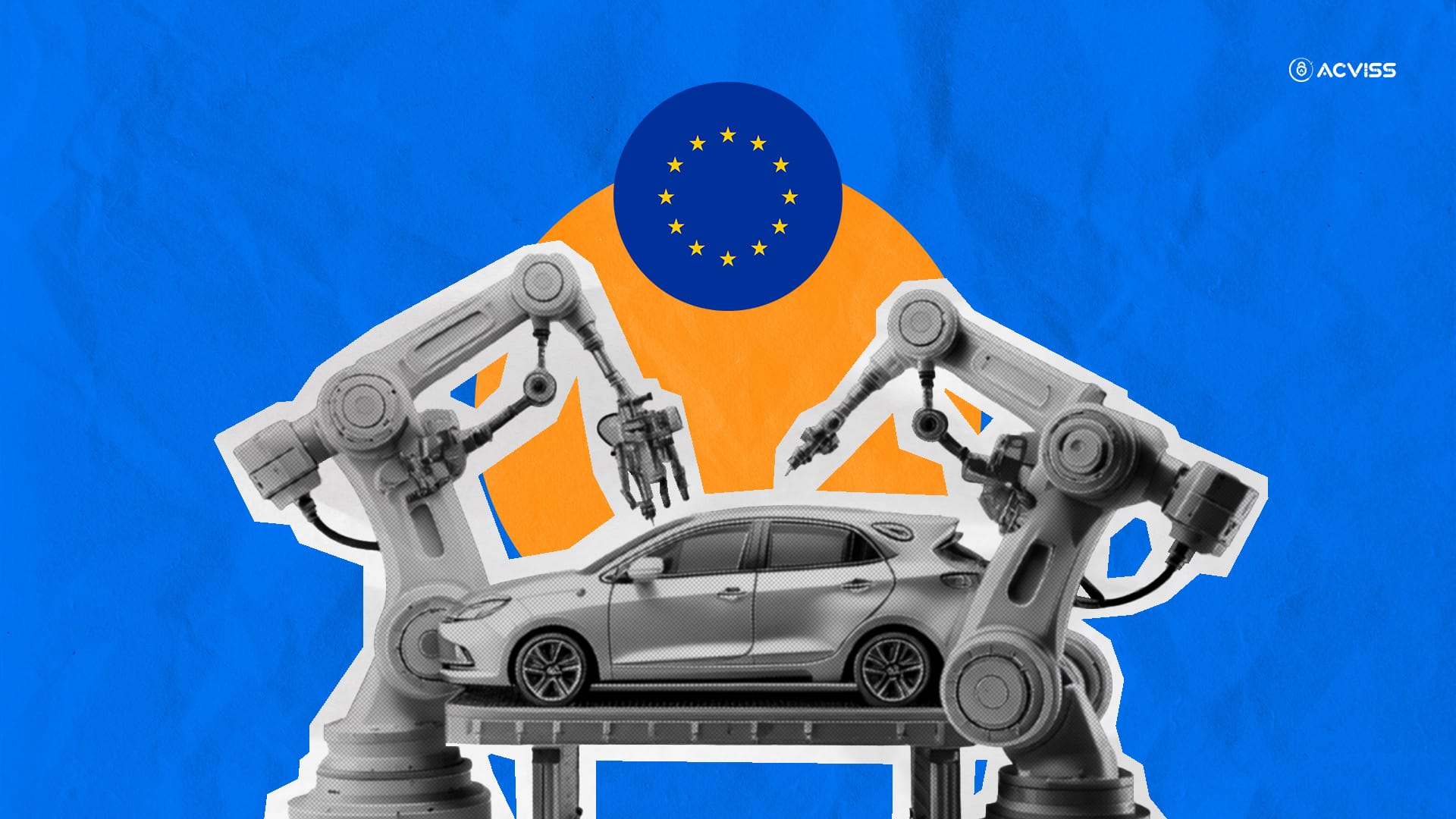How EUDR Regulation Impacts Material Sourcing in the Automotive Industry

Did you know that the interior of your automobile may contribute to deforestation? The European Union Deforestation Regulation is bringing attention to this unexpected relationship. It is a rule designed to reduce items that contribute to global deforestation. EUDR is primarily centred on agricultural products but its set guidelines are currently influencing several other sectors, including the production of automobiles. Let’s understand EUDR regulation to comprehend its implications.
Overview of EUDR
Businesses must make sure that the materials they use are obtained responsibly under the EUDR. It helps to reduce the amount of deforestation that comes with imported goods. Its main objectives are to lessen the damage that deforestation causes to the environment and to encourage ethical sourcing.
Numerous items are impacted by EUDR, including:
- Cocoa and coffee: Frequently obtained from areas that are prone to deforestation.
- Palm oil: Often found in food and personal hygiene items.
- Wood: Used in a variety of manufacturing and building processes.
- Soy: Widely utilised in consumer items and animal feed.
- Rubber: Necessary for tyres in the automobile industry as well as other sectors.
- Cattle: Widely associated with agriculture and the impact of deforestation.
- Derived products: All other products and finished goods derived from the above-mentioned commodities like leather and leather products, furniture made out of wood, etc.
Impact of EUDR on the Automotive Industry
Are you curious about the effects of EUDR on the automation industry? As an automaker, you probably pay special attention to laws that affect your company. The purpose of this law is to ensure that any imports of leather, rubber, or anything manufactured from these commodities are free of deforestation.
Since responsible sourcing is a major focus of EUDR, you must now assess your supply chains. This is especially true for high-risk products that might directly affect forest ecosystems. Here are a few materials:
Material | Description | Environmental Concerns | EUDR Compliance challenges |
|---|---|---|---|
Rubber | Necessary for seals, tyres, and other motor components. | Rubber production contributes to biodiversity loss, deforestation, and the effects of climate change. |
|
Leather | Prized for durability, especially in luxury interiors. | Cattle grazing for leather contributes to deforestation and animal welfare concerns, |
|
Wood | Enhances the interiors of cars such as the dashboards and trimmings with elegance. | Degradation of forests and loss of biodiversity result from unsustainable logging methods. |
|
Sourcing Challenges of High-Risk Materials

The next stage after determining high-risk materials under EUDR in your supply chain is to determine how to get goods ethically. Here's when the real difficulty starts. Let us explore the unique challenges that you may encounter when finding these items:
Traceability Issues
Complex supply networks make it challenging to trace the origin of goods. The responsible sourcing of these products from verified vendors is crucial. But it necessitates a high level of openness.
For instance, rubber is frequently sourced from tiny farms in deforestation-prone areas. This renders it challenging to verify every stage of the supply chain.
Verification of Suppliers
Working with several suppliers in various countries makes it difficult to confirm that each provider complies with EUDR rules.
To verify compliance, you will need to require genuine sustainability certificates and do routine audits.
Compliance Expenses
Operating costs rise with the use of new technology and thorough audits. IoT and blockchain can help with compliance. However, they are rather expensive.
These requirements could be difficult for smaller vendors to meet. It could reduce your possibilities for obtaining supplies.
Data Management
EUDR compliance requires handling and evaluating vast volumes of supply chain data. Accurate and current records are necessary to confirm that materials fulfil sustainability standards.
Simplifying data collecting and reporting via the use of digital technologies can be beneficial, but it comes with additional responsibilities.
Significance OF EUDR Compliance
Although sourcing high-risk materials for your automotive operations presents challenges, why is EUDR compliance crucial for you? Here are the key reasons:
- Market Access: The EU is a significant market for many automakers. To keep selling your vehicles in this region, compliance with EUDR is essential for automobile manufacturers.
- Reputation: Today’s consumers care about the environment. If you fail to comply with EUDR, you risk backlash from eco-conscious buyers. It can lead to a loss of trust and sales.
- Legal Risks: Non-compliance can lead to serious legal consequences. It includes hefty fines and lawsuits. Investing in compliance is significantly more advantageous for you than having to pay for ignorance.
- Sustainability Objectives: EUDR compliance is a wonderful fit for your company's sustainability objectives if it has committed to them. It helps you reduce your overall environmental impact.
Consequences of Non-Compliance
Now, let’s look at what can happen if you ignore EUDR regulations:
- Fines: You could face significant financial penalties for failing to meet compliance standards.
- Bans: Your products might be banned from the EU market altogether. It can severely harm your business.
- Reputational Damage: Consumers may decide to stay away from companies that promote the destruction of forests. Your sales and brand loyalty suffer as a result.
- Operational Difficulties: You might have to rush to locate compliant sources if there is a breach. It collapses your manufacturing timetables and supply chains.
Timeline for Compliance
You have to be completely in compliance with EUDR standards by December 2024. This deadline highlights how essential it is to evaluate your sourcing procedures. It also makes sure your supplies adhere to the requirements.
You may create the foundation for a more sustainable future by taking proactive measures to overcome the difficulties associated with procuring high-risk materials now. Let us examine how the EUDR affects your supply chain and why compliance requires transparency.
EUDR’s Supply Chain Impact
The European Union Deforestation Regulation is changing how you think about your supply chain. It’s no longer enough to just purchase materials. You must closely monitor and trace where each material comes from. What if each component of your vehicle had an origin story to tell about its travels? It includes everything from the wood in the dashboard to the rubber in the tyres.
Now, let's break this down. You must:
- Trace Material Origins: For instance, if you’re sourcing rubber, you need to know which plantation it came from. This involves looking at documents, and certifications, and possibly visiting suppliers to ensure they're not contributing to deforestation.
- Verify Sustainability: It’s crucial to ensure that each supplier follows eco-friendly practices. You must conduct audits and request proof that materials are sourced sustainably. This may involve examining their farming or harvesting methods.
Think of it as a treasure hunt, where every piece of information helps you create a clearer picture of how materials are sourced. The more transparent your supply chain, the easier it is to meet EUDR requirements!
Transparency & Traceability

To navigate this complex supply chain, you are turning to innovative traceability solutions. These tools help track materials from their origins to the final product, ensuring compliance with EUDR regulations. Here are some key solutions:
Blockchain Technology
Consider you have a digital ledger where all transactions are safely recorded and unchangeable. That’s what blockchain does! Each step in the sourcing process—from the rubber tree to the tyre factory—can be logged in real-time. This creates a trustworthy trail you can follow. If any issues arise, you can easily pinpoint where things went wrong.
Picture a chain of blocks, each representing a step in the supply chain. Each block contains details like the source, certification, and compliance status. Can you see how this might make tracking materials easier?
Real-Time Tracking Systems
As materials go through the supply chain, you can keep an eye on them with sensors and smart technologies. Just think about being able to get real-time updates on your resources, including their precise location and whether they adhere to sustainability guidelines. This real-time visibility helps you identify potential risks and ensure compliance with EUDR.
Imagine your smartphone alerting you when materials are on the way, showing your journey on a map. This openness increases customer trust. It also facilitates prompt, well-informed decision-making.
You can streamline your supply chain, stay in compliance, and show your dedication to sustainability by implementing these solutions.
Sourcing Strategies for EUDR Compliance
As you work toward EUDR compliance, sourcing strategies play a crucial role. Let’s explore five key approaches that can help you meet these regulations while promoting sustainability:
Implement Rigorous Due Diligence Protocols
- Conduct risk assessments for each supplier to identify areas prone to deforestation and human rights issues.
- Collect and verify detailed data on supply chains, including source location and compliance certifications.
- Establish regular audits and third-party verifications to maintain transparency throughout the supply chain.
Source from EUDR-Certified Suppliers
- Partner with suppliers who meet EUDR certifications, ensuring compliance with deforestation-free sourcing standards.
- Simplify paperwork and verification procedures with approved vendors to lower compliance concerns.
- Demand documentation of sustainable procurement methods. It includes adherence to regional environmental regulations, from vendors.
Utilize Track and Trace Technologies
- Integrate track and trace systems (e.g., blockchain or IoT) to monitor raw material origin, movement, and changes throughout the supply chain.
- Implement real-time data tracking and visibility to ensure materials meet EUDR standards from source to production.
- Use digital records to streamline documentation. This helps to make it easier to respond to audits or regulatory inquiries.
Promote Supplier Training and Collaboration
- Train suppliers on EUDR regulations and sustainable sourcing techniques. It helps enhance compliance.
- Work together with suppliers to create sourcing policies. It emphasizes the importance of traceability and data accuracy.
- Set up workshops and collaborative platforms for suppliers to share best practices and compliance strategies.
Sustainable Alternatives in Material Sourcing
In response to the EUDR, you might consider alternative materials to traditional leather, rubber, and wood. The table below outlines some of the top sustainable options available today and their benefits:
Material | Description | Benefits |
|---|---|---|
Plant-Based Material | Made from renewable sources like cactus, pineapple leaves, and apple skins. | Eco-friendly and reduces reliance on animal products. |
Lab-Grown Leather | Produced in labs by culturing animal cells to create leather-like material without animal farming. | Reduces environmental impact associated with cattle farming and deforestation. |
Recycled Rubber | Rubber is sourced from post-consumer products like tires and other waste materials. | Lowers waste, minimises deforestation, and has a smaller carbon footprint. |
Synthetic Leather | Engineered to mimic leather without using animal products, often made from PU or PVC. | Durable, animal-free, and can be produced with lower environmental impact. |
By embracing these alternatives, you can reduce their environmental footprint and align more closely with EUDR standards.
How Technology Aids EUDR Compliance
As you shift towards sustainable material sourcing, technology becomes an essential ally in meeting EUDR requirements. Here’s how tech can help you stay compliant:
Digital Supply Chain Solutions
These platforms streamline various supply chain processes from sourcing to logistics. It boosts both efficiency and compliance.
Benefits:
- Real-Time Monitoring: Gain continuous insights into material sourcing. This ensures it’s EUDR-compliant at every stage. For instance, real-time data can alert you if a shipment of wood deviates from certified paths.
- Data Analytics: Use analytics to understand your supply chain’s strengths and areas for improvement in compliance.
- Supplier Audits: Without human supervision, automate vendor inspections to guarantee compliance with EUDR regulations.
Artificial Intelligence
AI algorithms analyse vast amounts of data. It improves your decision-making and spotting risks before they become problems.
Benefits:
- Risk Assessment: AI analyses patterns in historical data and current practices. This aids in locating any adherence concerns.
- Enhanced Reporting: AI automates compliance reporting. This guarantees precise and up-to-date documentation.
- Predictive analytics: AI recognizes patterns and warns you of sourcing issues. It can help prevent non-compliance.
Internet of Things
IoT devices collect and transmit real-time data. It allows you to monitor materials and processes more effectively.
Benefits:
- Environmental Monitoring: Sensors track environmental conditions during sourcing and production. It helps you stay aligned with sustainability goals.
- Inventory Management: IoT optimises the use of sustainable materials. It reduces waste and ensures efficient resource use.
- Supply Chain Visibility: Gain access to comprehensive supply chain information. It verifies that all sourced materials meet EUDR standards.
Sustainability Reporting Software
You may ensure compliance by using this tool to monitor, evaluate, and report on green initiatives.
Benefits:
- Performance Metrics: Measure the sustainability of suppliers and materials. This helps ensure they meet EUDR standards.
- Automated Reporting: Generate EUDR-compliant reports quickly. It saves time and reduces errors.
- Stakeholder Communication: Share clear, accurate information about your sustainability practices. It enhances transparency with stakeholders.
Future of Material Sourcing in Automotive

As you continue embracing sustainable practices, expect significant changes in material sourcing. The combination of stricter regulations like EUDR and consumer demand for eco-friendly products means you’ll need to stay adaptable. Here are the trends shaping your industry:
- Increased Regulation: Governments worldwide are tightening laws on materials linked to deforestation. Staying compliant with these regulations will ensure you maintain access to key markets.
- Consumer Awareness: Today’s informed consumers favour brands that champion sustainability. Adopting greener sourcing and being transparent about materials can strengthen your market position.
- Innovation in Materials: Technological developments are producing eco-friendly substitutes like composites and bioplastics. Environmentally conscious customers will find it appealing.
- Circular Economy Practices: With a priority on material reuse and waste reduction, more automakers are switching to the concepts of the regenerative economy. This approach supports compliance and enhances your brand’s image.
Strategies to Future-Proof Your Sourcing
Take the following proactive measures to make sure your sourcing procedures adhere to changing environmental standards:
- Invest in Long-Term Collaborations: Connect with vendors who put sustainability first. Working together with companies that use verified eco-friendly sourcing lowers your risk of non-compliance.
- Embrace Technology: Use technologies to improve traceability and transparency, which will help you monitor materials and stay in compliance.
- Perform routine audits: Assess materials and suppliers regularly to identify any compliance issues early. Establish thorough auditing procedures to ensure continued compliance with sustainable guidelines.
- Talk to the Stakeholders: Participate in industry associations and environmental organisations to stay up to date on consumer trends and regulatory developments.
Sustainability Journey
EUDR-compliant sourcing is essential for your company’s sustainability journey. Prioritising responsible practices not only meets regulatory requirements but also builds trust with consumers who value eco-friendly brands. Investing in transparency, partnering with certified suppliers, and exploring sustainable alternatives secures a future-ready position in the competitive market. Embracing EUDR compliance is your key to contributing to a healthier planet and ensuring long-term business success in the automotive industry.
